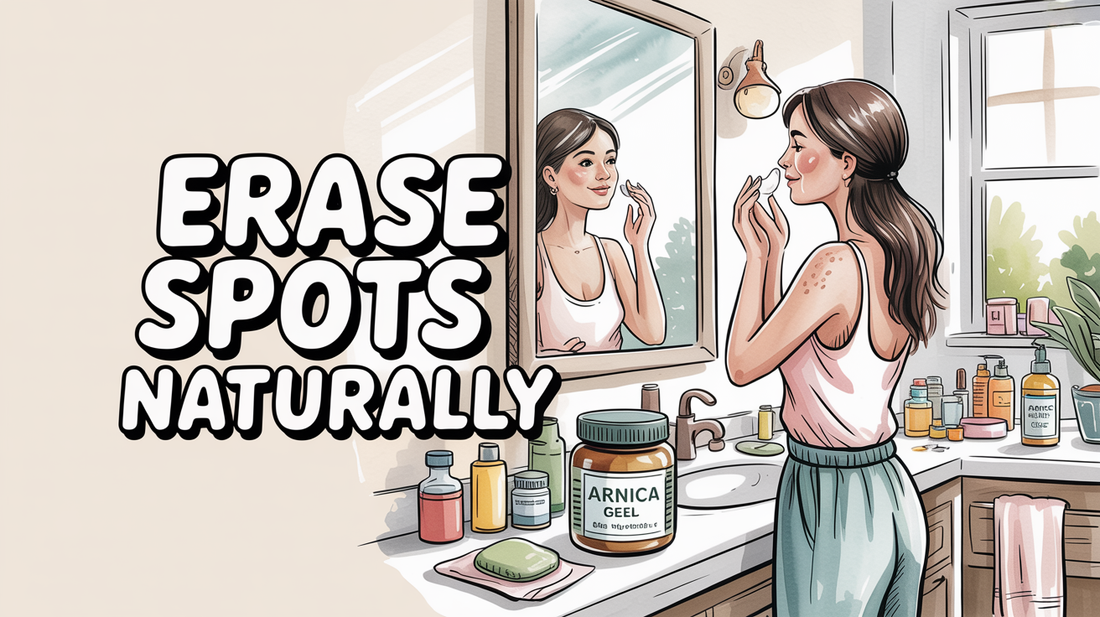Does Arnica Help with Hyperpigmentation?
Hyperpigmentation can be a frustrating skin concern, where certain areas of the skin appear darker due to excess melanin production. Understanding how to address this condition is essential. In this post, we will explore how arnica gel for hyperpigmentation, along with other natural remedies for uneven skin tone, may help you achieve a brighter complexion. We’ve organized the information into three sections to guide you through understanding hyperpigmentation, arnica’s role in skin brightening, and how to effectively integrate arnica gel into your skincare routine.
Understanding Hyperpigmentation and Its Causes
Hyperpigmentation occurs when patches of skin become darker due to an overproduction of melanin, the pigment responsible for skin color. Several factors can trigger this process, including sun exposure, hormonal changes, and inflammation. By identifying the causes, you can better manage this common skin condition.
Sun damage is a primary contributor to hyperpigmentation, leading to age spots, sun spots, and freckles as a result of UV exposure. Additionally, post-inflammatory hyperpigmentation (PIH) can develop after skin injuries like acne or cuts, particularly affecting those with darker skin tones. Hormonal changes, such as those experienced during pregnancy or from birth control, may also lead to dark patches on the face.
- Excess melanin production can be triggered by sun exposure, leading to age spots and freckles.
- Post-inflammatory hyperpigmentation often occurs following skin trauma, such as acne or cuts.
- Hormonal changes can cause dark patches, especially during pregnancy or with certain medications.
Try It Tonight: Eye & Skin Refresh ✨
- Remove makeup and cleanse gently with lukewarm water.
- Apply a cool compress or take a few deep breaths to relax facial tension.
- Lightly dab a pea-sized amount of Jane Vine Arnica Gel under eyes or on areas of concern. Always patch-test first if you’re new to arnica-based skincare.
Arnica’s Role in Skin Brightening
Arnica, derived from the Arnica montana flower, has been traditionally used in skincare for its potential benefits. While scientific evidence specific to hyperpigmentation is limited, arnica’s anti-inflammatory properties may provide some indirect support for certain pigmentation issues.
This herb contains compounds like helenalin and flavonoids that may help soothe skin inflammation and reduce redness. Its potential to enhance circulation could also support skin healing and cell turnover, particularly beneficial for conditions like post-inflammatory hyperpigmentation.
- Arnica may help reduce skin inflammation and promote a more even skin tone.
- Its soothing effects could be particularly useful for skin recovering from trauma.
- Gentler than many chemical treatments, arnica is a favorable option for sensitive skin types.
Why We Recommend a Gentle Helper 🌿
Jane Vine Arnica Gel is designed for quick absorption and a soothing feel, making it a wonderful addition to your skincare routine. It may help reduce the appearance of puffiness and skin stress over time.
- Fast-absorbing comfort—no greasy residue.
- Gentle, cooling sensation designed for delicate skin.
- Clean, naturally inspired formula with a fresh finish.
How to Add Arnica Gel to Your Skincare Routine 🔍
Incorporating arnica gel into your skincare routine requires careful consideration to maximize benefits while minimizing risks. Here’s how to use it effectively.
Before applying arnica gel, it’s advisable to perform a patch test on a small area of skin to check for any allergic reactions, as some individuals may experience contact dermatitis. Apply the gel to clean, dry skin 1-2 times daily, focusing on areas of hyperpigmentation while avoiding sensitive regions like around the eyes.
- Always start with a patch test to ensure compatibility with your skin.
- Integrate arnica gel into your daily routine, especially in conjunction with sunscreen to protect against further pigmentation.
- Combine arnica with proven ingredients like vitamin C for enhanced effects, but introduce them gradually.

